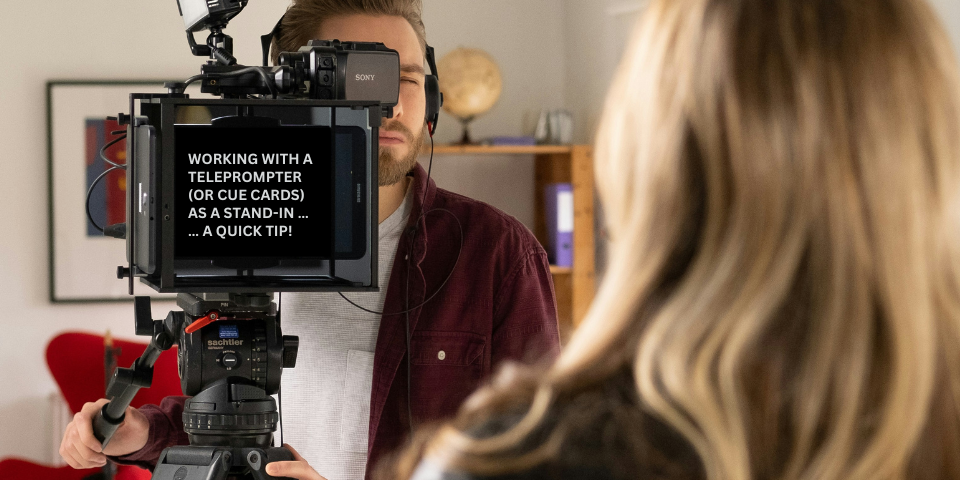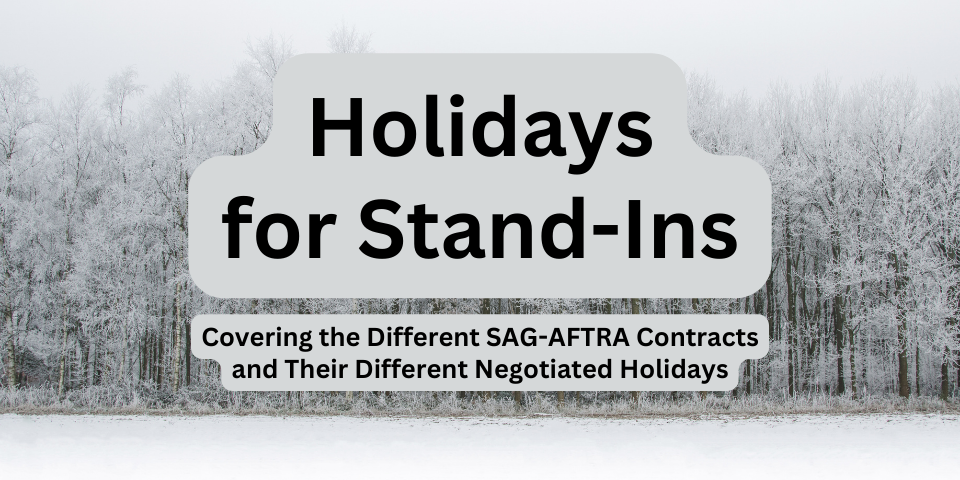We’ve long covered what to wear in the winter months when you are standing in on film and television sets.
Aside from tips on clothing, here is some general advice when you are standing in outside in colder months.
At Booking, Ask Casting If You Are Shooting Exteriors
Casting may or may not notify you if you are standing in outside — even if they should.
To protect yourself, when you are booked, ask casting if you are shooting any exteriors on the day you are standing in. If you hear you are shooting exteriors, you will know that you should prepare to stand in outside in the cold or other elements.
If casting says you are shooting interiors and exteriors, you should seriously prepare yourself to shoot exteriors — and perhaps wear base layers or bring a change of clothing so that you can be more comfortable inside.
Don’t skimp on cold-weather gear if it seems your day is split between interiors and exteriors: You could have a day mostly of exteriors and one short interior shot.
Know That Casting May Not Know If You Are Shooting Exteriors
Sadly, casting directors are not always in the know with respect to whether there are any exterior shots on the day you are standing in.
To protect yourself, do not completely trust what the casting director says about exterior shooting. The casting director may not be aware of changes to the shooting schedule that could invite exterior shooting.
At That, Know That Surprise Changes May Happen in the Shooting Schedule
Just to be safe, you may want to bring cold-weather gear on days casting says you are shooting interiors so that you are prepared with a surprise change of schedule.
Weather changes, actor health, and other logistical challenges may force changes in the shooting schedule and add an exterior shot on a day intended only for interiors.
Contact Other Stand-Ins Working That Day
If you’re fortunate, you’ll know stand-ins who are working on the project regularly and who will be okay with providing preliminary information to you on the shooting schedule for the day you’re working.
Or, even better, that stand-in will be okay with providing callsheet information once production wraps the day before you’re working. Keep in mind, though, that stand-ins may be just as out of the loop about shooting schedules and surprise shots as casting directors.
If you’ve cultivated a genuine relationship with an on-set stand-in, it is more favorable to ask that stand-in for advance information than to ask a stand-in you barely know. Avoid obligating the on-set stand-in to provide you with advance information, and if you need to know advance information, consult your casting director rather than pester on on-set stand-in.
Also keep in mind that not all stand-ins are comfortable providing advance information about a production — for professional and/or privacy reasons. Their jobs are to do their jobs, not provide you with information that could be confidential and affect their jobs should the information leak from you. Be courteous in requesting information, and you may be more successful in getting the information.
Know That, Sometimes, Interior Shots May Have an Exterior Component
Sometimes on the callsheet a scene is listed as “INT/EXT,” which explains that there are interior and exterior components to a scene. Knowing nothing else about the scene, this would usually imply you should prepare to work outside in the cold.
For example, a scene taking place on a porch may have the camera crew and cast on the porch outside and in the foyer on the inside. If you are in such a doorway, you will probably be cold and require cold-weather gear.
Still, sometimes on a callsheet a scene is listed as “INT,” which suggests the scene is all interior shots, but when you arrive on set you find out, in fact, the scene has exterior components or cold-weather aspects. For example, the director may add a surprise shot which takes an actor outside to shoot, or requires the actor to enter from outside. Or, a scene could take place inside next to an open window on a windy day.
Essentially, during winter months, be prepared — the callsheet is not definitive. Bringing cold-weather gear for when you are standing in during these scenes will help protect you from the surprise elements.
Protect Your Toes
For many people, the hardest part of their body to keep warm is their toes. When their toes go cold, their overall discomfort in the cold skyrockets.
While toe warmers may help stave off some cold, they often do not activate well in the cold. Warm boots and warm socks will help, as will overshoes like NEOS. If you can keep your feet warm, you can do a number toward your comfort in the cold.
Overdress for Warmth
You may think as you head out to stand in all day in the cold that you will be able to tolerate it. You may feel assured as you head out that “it’s not so bad out” when it is even above freezing.
However, being in the cold for a long period of time — and being relatively inactive, as many stand-ins are when they are working — will increase the effects of the cold on your body.
It is advisable when you are dressing for your exterior day of standing in to counter any arguments you might make for bringing less cold-weather gear. Instead, tell yourself to overdress for the cold.
In so doing, you will extend the duration of your warmth and your comfort on the job. It can be quite miserable once you get cold, and you may be cursing yourself if you don’t bring enough protection from the elements.
Conclusion
This advice should go a long way toward helping you avoid mistakes when confronted with standing in outside during the winter months. In general, overdo your dress and avoid trusting any claims that you are shooting all interiors, and you should be well prepared psychologically for the challenges of standing in on television and film sets during the winter.
Do you have any additional advice on standing in in winter months? What gear do you recommend? Share your advice below!






Leave A Comment